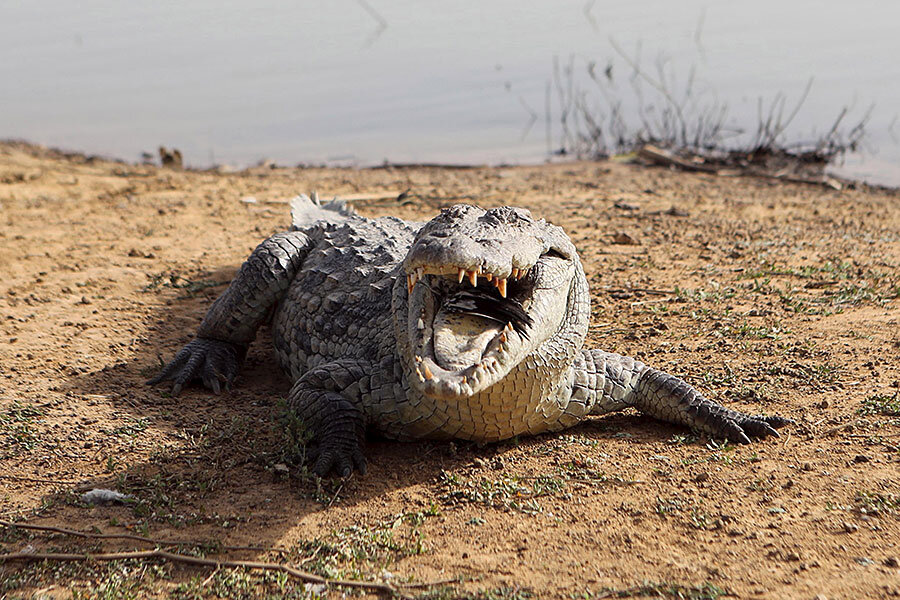Humongous ancient crocodile fossil discovered in Sahara
Loading...
Scientists have uncovered the fossil remains of the biggest ever sea-dwelling crocodile, on the edge of the Sahara desert in Tunisia.
The beast would have grown up to 30 feet in length, weighing in at three tons. Its five-foot skull alone is as long as many people.
Yet the real significance of this discovery lies not in the reptile’s mammoth proportions, but rather in the evidence it provides relating to the supposed mass extinction at the end of the Jurassic period.
Machimosaurus rex, as this crocodile has been named, was discovered in rock that dates to 120 million years ago.
A mass extinction 145 million years ago has long been debated by paleontologists, reports National Geographic, an event that was thought to have wiped out Machimosaurus’s very own group, the teleosaurids.
“The new find adds to growing evidence that a lot of marine reptiles made it across the boundary and through the supposed extinction,” University of Edinburgh paleontologist Stephen Brusatte, who was not involved with the new study, told National Geographic.
The remains of Machimosaurus rex were discovered below a narrow layer of sediment, in an area that likely hosted an ocean-facing lagoon.
Speaking to the Washington Post, the team’s leader, Federico Fanti of the University of Bologna, described the creature as “massive."
"It's just big. It's almost the size of a bus," he said.
Dr. Fanti talks of the creature’s “massive skull capable of a remarkable bite force.” Taken in conjunction with its “stocky, relatively short and rounded teeth”, Fanti hypothesizes it was a generalist hunter, likely snatching a variety of prey.
“It would likely have been something of an ambush predator, hanging around in shallow water hunting turtles and fishes and maybe waiting for some land animals to come a little too close to the shore,” explains Dr. Brusatte.
Tunisia is a land rich in fossils, and yet, according to Brusatte, it remains relatively unexplored. Indeed, at Machimosaurus’s site, fish and turtle remains have also been unearthed, yet to be identified.
And while Machimosaurus rex is undoubtedly deserving of its regal name, its freshwater relative Sarcosuchus imperator was bigger, stretching to 40 feet and hauling about a whopping eight tons of body weight.
Sarcosuchus lived about 110 million years ago, at a time when sub-Saharan Africa was scoured by rivers. It would likely have prowled the river banks, awaiting its prey, much as its modern relatives still do.
The freshwater behemoth was given its scientific name in the 1960s, but it was only in the year 2000 that Paul Sereno, a National Geographic explorer-in-residence, found remains so enormous that he and his team conjured up the nickname ‘SuperCroc’.
Sereno’s find was in Niger, in a fossil graveyard known as Gadoufaoua, on the opposite edge of the Sahara from Fanti’s Machimosaurus. There, they uncovered myriad Sarcosuchus remains, including armor plates, jaws, limbs – and a six-foot-long skull.
None of this, however, will dim Fanti’s glow. Of his Machimosaurus rex, he says, "This one was a big surprise, not because we found fossils, but we found beautiful ones."







